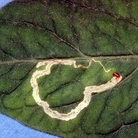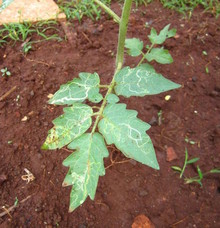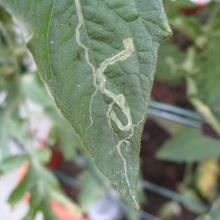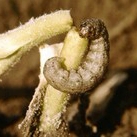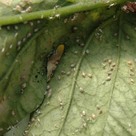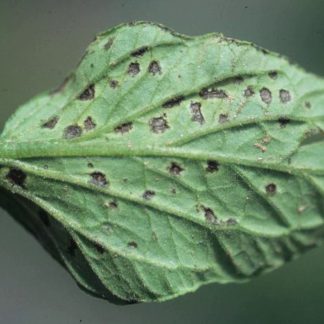Leafminers
Caused by: Tuta absolutaProblem Category: Insect
Symptoms: Thin, white, winding trails on leaves; heavy mining can result in white blotches on leaves and leaves dropping from the plant prematurely; early infestation can cause fruit yield to be reduced; adult leafminer is a small black and yellow moth which lays its eggs in the leaf; larvae hatch and feed on leaf interior.
Comments: Origin and distribution of Tuta absoluta: This species is originated in South American countries. Later the insect spread to Spain (2006), France, Italy, Greece, Malta, Morocco, Algeria, Libya and Turkey in following years. Further the insect has been identified in Syria, Lebanon, Jordan, Iraq, Iran, Saudi Arabia, Yemen, Oman and the rest of the Gulf states. In Africa it spreads from Egypt to Sudan, South Sudan, Ethiopia, Uganda, Kenya and Tanzania (in East) and to Senegal and Nigeria through the west. (It spread through infested fruits and packaging materials) Life cycle: Mature larvae drop from leaves into soil to pupate; entire lifecycle can take as little as 2 weeks in warm weather; insect may go through 7 to 12 generations per year. Yield loss: If unchecked, insect will cause 100% yield loss. The larvae feeds on apical buds, tender new leaflets, flowers, and green fruits which make it a serious pest in tomato. Host Range: This insect also attacks other solanaceous crops like potato, eggplant, pepino and tobacco. It is also reported on many solanaceous weeds.
Management: Leafminer natural enemies normally keep populations under control; check transplants for signs of leafminer damage prior to planting; remove plants from soil immediately after harvest if making new plantings in same place or close by; keep the field free from weeds especially Solanum, Datura, Nicotiana; use pheromone traps and white sticky traps to monitor and control insect.
Control: Spary the chiili garlic extract or 5% Neem seed kernal extract to control leaf miner

